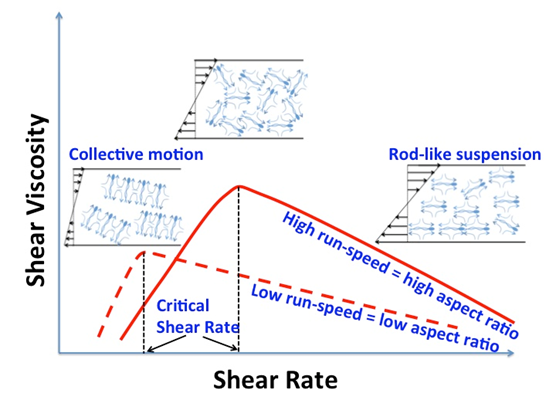
Venkatesh Lab
Richa Karmakar
 Education:
Education:
M.Tech (Jadavpur University; Kolkata (2010)
B.Tech (Heritage Institute of Technology, Kolkata; 2008)
Current Status:
Research Scholar
richa_karmakar at iitb dot ac dot in
Research Summary
Rheology of Active Suspensions & Effect of sensing on Chemotaxis
 Chemotaxis is a phenomenon in which microorganisms are able to direct their movements in response to chemicals present in their surroundings. It is well known that Escherichia coli executes chemotactic motion in response to chemical cues by modulating the flagellar motor bias. Recently, it has been shown that in addition to changing the mean run duration, cells also bias their mean orientation in the direction of increasing concentration of chemoattractants leading to an enhanced migration. By studying the detailed motion of cells in a uniform concentration of glucose and its non-metabolizable analogue (both are chemoattractants) in a capillary, we show that changing concentrations may be accompanied by variation in the swimming speed. The presence of the ligands leads to a smoother motion with a lower mean square angular displacement during their run. For fixed run duration, cells exposed to the ligands achieved a higher peak run speed after a tumble compared to that in plain motility buffer. The increase in run speed occurred at constant fractional tumble durations indicating near-to-perfect adaption over a range of glucose concentrations. Thus, it appears that run speed variation could play a role in the chemotactic response of E. coli.
Chemotaxis is a phenomenon in which microorganisms are able to direct their movements in response to chemicals present in their surroundings. It is well known that Escherichia coli executes chemotactic motion in response to chemical cues by modulating the flagellar motor bias. Recently, it has been shown that in addition to changing the mean run duration, cells also bias their mean orientation in the direction of increasing concentration of chemoattractants leading to an enhanced migration. By studying the detailed motion of cells in a uniform concentration of glucose and its non-metabolizable analogue (both are chemoattractants) in a capillary, we show that changing concentrations may be accompanied by variation in the swimming speed. The presence of the ligands leads to a smoother motion with a lower mean square angular displacement during their run. For fixed run duration, cells exposed to the ligands achieved a higher peak run speed after a tumble compared to that in plain motility buffer. The increase in run speed occurred at constant fractional tumble durations indicating near-to-perfect adaption over a range of glucose concentrations. Thus, it appears that run speed variation could play a role in the chemotactic response of E. coli.
A suspension of motile cells exhibits complex rheological properties due to their collective motion. We measure the shear viscosity of a suspension of Escherichia coli strains varying in motor characteristics such as duration of run and tumble. At low cell densities, all strains irrespective of their motor characteristics exhibit a linear increase in viscosity with cell density suggesting that the cells behave as a suspension of passive rods with an effective aspect ratio set by the motor characteristics of the bacteria. As the cell density is increased beyond a critical value, the viscosity drops sharply signaling the presence of strongly coordinated motion among bacteria. The critical density depends not only on the magnitude of shear but also the motor characteristics of individual cells. High shear rate disrupts the coordinated motion reducing its behavior, once again, to a suspension of inactive particles.
PUBLICATIONS
Motor characteristics determine the rheological behavior of a suspension of microswimmers.
Richa Karmakar, Ranjit Gulvady, Mahesh S. Tirumkudulu, and K. V. Venkatesh. Physics of Fluids, 26, 071905 (2014). doi: 10.1063/1.4890005